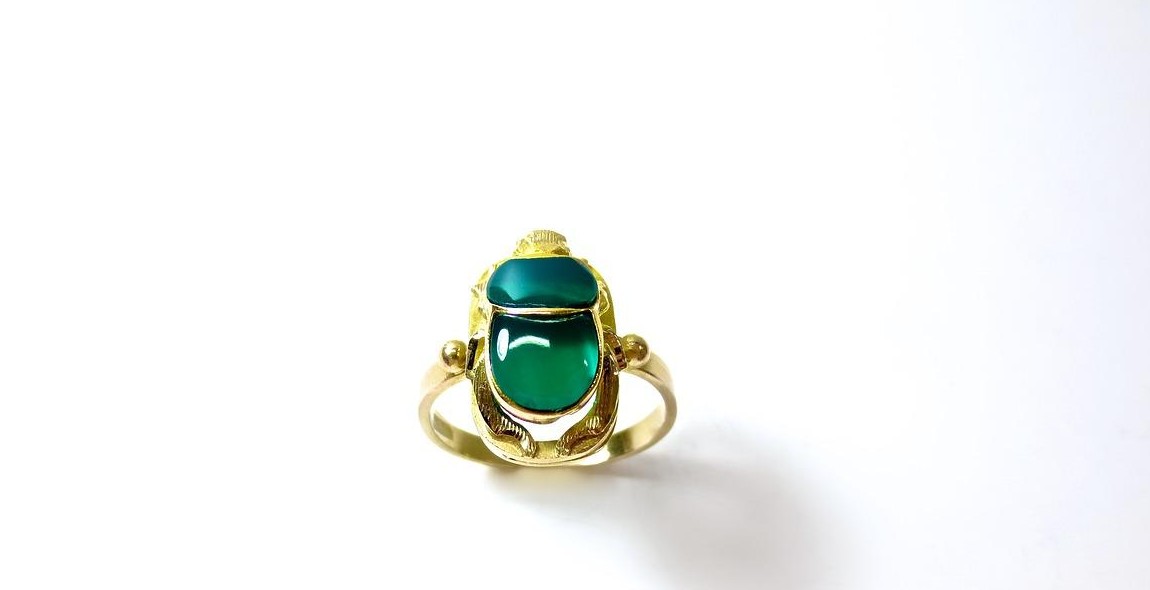How to Explore Mummy Myths and Legends: Uncovering the Fascinating Stories Surrounding Mummies
As a professional article writer and content creator with years of experience, I have always been fascinated by mummies and the stories surrounding them. There is something mysterious and intriguing about these ancient human remains that have been preserved for centuries.
Exploring mummy myths and legends is not only an exciting adventure but also a great way to learn about the history and culture of ancient civilizations. From the ancient Egyptians to the Incas and the Chinese, mummies have been found all over the world, and each culture has its own unique beliefs and practices regarding the preservation of the dead.
In this article, I will share my personal experiences and insights on how to explore mummy myths and legends. We will cover topics such as the history of mummification, the different types of mummies, the myths and legends surrounding them, and how to visit museums and archaeological sites where mummies are on display.
Whether you are a history buff, an archaeology enthusiast, or simply someone who loves a good mystery, exploring mummy myths and legends is an adventure that you won’t forget.
What are Mummies?
Mummies are human or animal bodies that have been preserved by natural or artificial means to prevent decomposition. These preserved bodies are often wrapped in cloth or placed in a container, such as a coffin or sarcophagus.
Defining Mummies
The process of mummification involves the removal of internal organs and the drying out of the body. This is typically achieved through a combination of natural and artificial means, such as exposure to dry air, salt, or chemicals. The body is then wrapped in cloth or placed in a container to protect it from further decay.
In ancient cultures, mummification was often associated with beliefs about the afterlife. It was believed that preserving the body would allow the soul to enter the afterlife and continue on in the same form it had in life. Mummies were often buried with items that were thought to be necessary for the afterlife, such as food, clothing, and jewelry.
The History of Mummies
Mummies have been found in many different cultures throughout history. Some of the most famous mummies come from ancient Egypt, where mummification was practiced for thousands of years. In addition to human mummies, animal mummies were also common in ancient Egypt. These included cats, dogs, and even crocodiles.
Other cultures that practiced mummification include the Incas of South America, who mummified their royalty, and the Chinchorro people of South America, who mummified their dead as far back as 5000 BC. Mummies have also been found in China, Europe, and other parts of the world.
| Key Points |
|---|
| Mummies are preserved bodies that have been dried out and wrapped in cloth or placed in a container. |
| Mummification was often associated with beliefs about the afterlife in ancient cultures. |
| Mummies have been found in many different cultures throughout history, including ancient Egypt, South America, China, and Europe. |
Now that we have a better understanding of what mummies are and their history, let’s explore some of the myths and legends that have arisen around them.
Mummy Myths and Legends
For centuries, mummies have been a source of fascination and intrigue. From the ancient Egyptians who believed in the power of mummification to modern-day pop culture, mummies have captured the imaginations of people all over the world. Here are some of the most popular myths and legends surrounding mummies:
Mummies in Ancient Egypt
The ancient Egyptians believed that mummification was necessary to ensure the safe passage of the soul into the afterlife. The process involved removing the organs and wrapping the body in linen bandages. The mummy was then placed in a sarcophagus and buried with treasures and offerings for the gods. One of the most enduring myths surrounding mummies in ancient Egypt is the curse of the pharaohs. It is said that anyone who disturbs the tomb of a pharaoh will be cursed with bad luck and even death. While there is no scientific evidence to support this claim, it has been popularized in pop culture and continues to capture the public’s imagination.
Mummies in Pop Culture
Mummies have been a staple of horror movies and literature for decades. From Boris Karloff’s portrayal of Imhotep in the 1932 film “The Mummy” to the more recent “Mummy” franchise starring Tom Cruise, mummies have been used as a source of terror and suspense. However, not all depictions of mummies in pop culture are negative. In fact, mummies have also been portrayed as romantic figures, as seen in the novel “The Mummy” by Anne Rice and the movie “The Mummy Returns” where the mummy is depicted as a heroic figure fighting against evil forces.
Overall, mummies continue to capture the imagination of people all over the world. Whether it’s the ancient Egyptians’ belief in the power of mummification or the modern-day fascination with mummies in pop culture, these fascinating artifacts continue to inspire curiosity and wonder.

The Curse of the Mummy
The mummy curse is one of the most well-known and intriguing myths surrounding ancient Egypt. The most famous example of this is the legend of King Tut’s curse, which was said to have been placed on anyone who disturbed the pharaoh’s tomb.
The Legend of King Tut’s Curse
The story goes that when archaeologist Howard Carter discovered the tomb of King Tutankhamun in 1922, he found a warning inscribed on the door: “Death shall come on swift wings to him who disturbs the peace of the king.”
Soon after the tomb was opened, a string of mysterious deaths occurred, including that of Lord Carnarvon, who had financed the expedition. Many people believed that the curse had been unleashed and that those who had disturbed the tomb had brought a curse upon themselves.
The Reality of the Curse
While the idea of a mummy curse is intriguing, there is little evidence to support the idea that King Tut’s tomb was actually cursed. Many of the supposed “victims” of the curse were actually quite old and in poor health at the time of their deaths. In fact, Lord Carnarvon died from an infected mosquito bite, not from a curse.
Despite this, the legend of the mummy curse continues to captivate people’s imaginations. It has been the subject of countless books, movies, and TV shows, and many people still believe that the curse is real.
| Pros | Cons |
|---|---|
| It adds mystery and excitement to the story of King Tut’s tomb. | There is little evidence to support the idea that the curse is real. |
| It has been the subject of countless books, movies, and TV shows, which has helped to keep the story of King Tut alive. | The idea of a curse can be harmful and disrespectful to the people and culture involved. |
Overall, while the mummy curse may be a fascinating legend, it is important to remember that it is just that – a legend. The reality of King Tut’s tomb is still a remarkable and exciting discovery, even without the added intrigue of a curse.

Uncovering Mummy Secrets
Exploring the mysteries of mummies is a fascinating topic that has intrigued scientists, historians, and enthusiasts for centuries. From the science of mummies to the fascinating discoveries, there is so much to learn about these ancient relics.
The Science of Mummies
The science of mummies is a complex field that involves a variety of disciplines, including archaeology, anthropology, and medical imaging. Through the use of modern technology, scientists have been able to learn more about mummies than ever before.
One of the most important aspects of mummy science is preservation. Mummies are preserved through a variety of natural and artificial means, including desiccation, embalming, and freezing. By studying the preservation methods used by different cultures, scientists can gain a better understanding of the beliefs and customs of ancient societies.
Another important aspect of mummy science is the study of the mummy’s body itself. Through the use of medical imaging techniques like CT scans and X-rays, scientists can learn about the mummy’s health, cause of death, and even their diet and lifestyle.
The Fascinating Discoveries
Over the years, scientists and historians have made some incredible discoveries about mummies. From new mummy tombs to ancient curses, there is always something new to uncover.
- In 2018, archaeologists in Egypt uncovered a tomb containing more than 50 mummies, including some dating back to the New Kingdom period. The discovery shed new light on the burial practices of ancient Egyptians.
- One of the most famous mummies in history is King Tutankhamun, also known as King Tut. In 1922, archaeologist Howard Carter discovered Tut’s tomb in the Valley of the Kings, revealing an incredible treasure trove of artifacts and treasures.
- Another fascinating discovery related to mummies is the so-called “Curse of the Pharaohs.” According to legend, those who disturb the tombs of ancient Egyptian pharaohs will suffer a terrible curse. While there is no scientific evidence to support this claim, it remains a popular topic of discussion among mummy enthusiasts.
| Aspect | Details |
|---|---|
| Science of Mummies | Preservation methods, study of mummy’s body |
| Fascinating Discoveries | New tombs, King Tut’s tomb, Curse of the Pharaohs |
Exploring the secrets of mummies is a never-ending journey that continues to reveal new insights into ancient cultures and civilizations. From the science of preservation to the fascinating discoveries, there is always something new to uncover in the world of mummies.

Conclusion
Exploring the myths and legends surrounding mummies can be a fascinating and enlightening experience. From the ancient Egyptians to more recent discoveries in South America, mummies have captured the imaginations of people around the world for centuries.
As we have seen, many of the myths surrounding mummies have been debunked by modern science, but this does not make them any less intriguing. From the curse of King Tutankhamun to the mysterious deaths of those who discovered the tomb of the first Emperor of China, the stories surrounding mummies continue to captivate us.
Whether you are a history buff, a fan of horror movies, or simply curious about the world around you, there is something about mummies that is sure to pique your interest. So why not take some time to explore the fascinating stories surrounding these ancient relics?
- Visit a museum with a mummy exhibit
- Read books or watch documentaries about mummies
- Join a local historical society or archaeology club
- Travel to Egypt or other countries with a rich mummy history
By taking the time to learn more about mummies, you can gain a deeper appreciation for the cultures and beliefs of the people who created them. So go ahead and start exploring – who knows what fascinating stories you will uncover!
